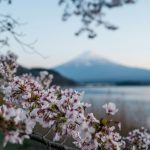Table of Contents
Standing in Samarkand’s Registan Square at dawn, watching sunlight illuminate centuries-old madrasas, I realized that Uzbekistan holds some of the world’s most spectacular yet least-visited architectural treasures. After three months of exploring the ancient cities of Uzbekistan, I’ve discovered how to experience these remarkable places beyond the typical tourist route. Here’s your guide to discovering Uzbekistan’s architectural and cultural wonders.
The Samarkand Symphony
Samarkand’s turquoise domes have captivated travelers for centuries, but experiencing this city requires strategy.
The Registan complex demands multiple visits – morning light reveals intricate tile work, while evening illumination creates a magical atmosphere. Beyond the famous square, the Shah-i-Zinda necropolis offers a stunning collection of mausoleums where each building tells a unique story. Visit between 7-9 AM when local pilgrims come to pray, and you’ll experience these spaces as intended. The city’s best-kept secret is the medieval observatory of Ulugh Beg, where you can still trace the astronomical calculations that made Samarkand a center of scientific learning.
The Bukhara Experience
Bukhara’s old city feels frozen in time, with over 140 protected architectural monuments.
Unlike Samarkand’s grand spaces, Bukhara’s charm lies in its intimate courtyards and winding alleyways. The key is staying in a traditional madrasa-turned-hotel in the historic center. This allows early morning walks before tour buses arrive and evening explorations when the ancient trading domes empty. Look for small open workshop doors, where masters still practice traditional crafts. The real magic happens in the residential areas surrounding the main monuments, where local life continues much as it has for centuries.
The Khiva Time Machine
Stepping inside Khiva’s walled city, Ichan Kala feels like entering a living museum.
The key to experiencing Khiva properly is staying within the walls overnight – after day-trippers leave, the medieval city comes alive with local life. Climb the city walls before sunset for panoramic views, then explore the moonlit streets. The morning call to prayer echoing off ancient minarets creates an unforgettable atmosphere. Despite its museum-like appearance, Khiva remains a living city where families have inhabited the same houses for generations. Early morning visits to local bakeries reveal traditional bread-making methods unchanged for centuries.
The Tashkent Contrast
Uzbekistan’s capital offers a fascinating blend of Soviet modernism, Islamic architecture, and contemporary development. The metro stations are underground museums of Uzbek art, each telling a different story of the nation’s history. Visit the Chorsu Bazaar early in the morning to witness the modern incarnation of the Silk Road trade. The religious heart of the city, Hazrat Imam Complex, provides a peaceful retreat from the urban bustle. Don’t miss the traditional mahallas (neighborhoods) where community life centers around local tea houses. These areas reveal how ancient social structures adapt to modern city life.
The Craftsmanship Trail
Uzbekistan’s artistic heritage lives on in its master craftspeople.
In Margilan, visit silk factories where traditional ikat patterns are still created by hand. Rishtan’s ceramic masters maintain centuries-old blue glazing techniques. Rather than buying from tourist shops, seek out working workshops where you can watch artists at work. Many masters offer informal apprenticeships – spending a day learning basic techniques provides a deeper appreciation of their skills. The best workshops are often unmarked – ask local tea house owners for introductions.
The Culinary Journey
Uzbek cuisine tells the story of centuries of cultural exchange along the Silk Road. Each region has its specific plov (pilaf) recipe – try them all. Visit local markets early in the morning when restaurant chefs select their ingredients. Home cooking classes in traditional houses offer insights into daily life. Learn the ritual of Uzbek tea culture, which varies by region. The best food experiences often happen in family homes – accept dinner invitations when offered. Markets also reveal seasonal specialties and traditional preservation techniques.
The Festival Calendar
Timing your visit around traditional festivals provides unique cultural insights. Navruz (spring equinox) brings communities together for massive public celebrations. The Silk and Spices Festival in Bukhara showcases traditional crafts and music.
Regional festivals often celebrate specific fruits or agricultural products. Even smaller village festivals offer authentic experiences of Uzbek traditions. Festival times see traditional music and dance performances in historic venues, creating magical atmospheres.
The melon festivals of Karakalpakstan in August draw farmers displaying hundreds of varieties, while September’s Baysun Cultural Heritage Festival celebrates traditional mountain culture with rarely-seen customs. Book accommodations months ahead for major festivals, as local hotels fill quickly. Many festivals coincide with harvest seasons, offering opportunities to participate in traditional agricultural ceremonies and taste regional specialties at their peak freshness.
The Desert Fortresses
Beyond the main cities, ancient fortresses dot the desert landscape. The Karakalpakstan region’s desert castles tell stories of fallen civilizations. Visit at sunrise when desert light creates stunning photo opportunities. Many sites require advance permits – arranged through local tour operators. Some fortresses still have resident caretaker families maintaining centuries-old connections to these sites. These remote locations offer chances to experience traditional nomadic hospitality in nearby villages.
The Local Connection
True understanding of Uzbekistan comes through its people. Learn basic Uzbek greetings – locals appreciate the effort. Accept chai (tea) invitations – they often lead to fascinating conversations. Understand the Mahalla system of community organization. Respect local customs regarding dress and behavior, especially in conservative areas. Building relationships with local families often leads to wedding invitations – attend if possible for incredible cultural experiences.
The Practical Essentials
Navigate Uzbekistan’s unique challenges with proper preparation. Carry crisp US dollars for exchange. Register with local authorities within three days of arrival. Learn the marshrutka (minibus) system for regional transit. Download offline maps and translation apps. Carry a small photo album to share with locals – it helps build connections. Understanding basic cultural etiquette smooths daily interactions.
The magic of Uzbekistan lies not just in its monuments but in the living traditions that connect past to present. Pack patience, respect, and curiosity, and you’ll discover one of the world’s most remarkable yet underexplored destinations.
Making Your Silk Road Journey Matter
Exploring Uzbekistan’s ancient cities is more than just visiting historic sites – it’s about understanding how past and present interweave in this unique corner of the world. Success comes from slow travel, cultural respect, and willingness to step off the typical tourist path. Plan your visits around local rhythms rather than tour bus schedules. Build relationships with local communities. Take time to appreciate both grand monuments and quiet moments.

I’m Garrett, a seasoned photojournalist with a passion for uncovering the world’s hidden treasures. My journey is fueled by a deep curiosity for diverse cultures and breathtaking landscapes. When I’m not behind the lens capturing the world’s wonders, you can find me exploring underwater realms or sharing my passion for discovery with my two adventurous children.




